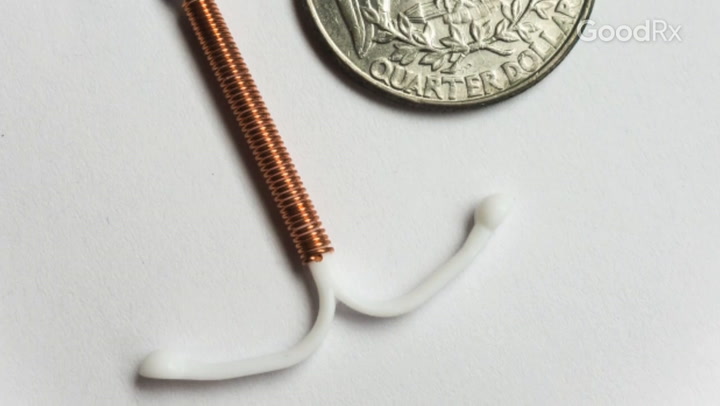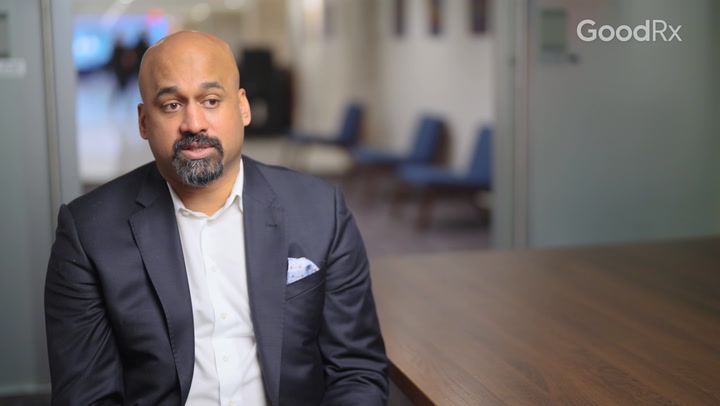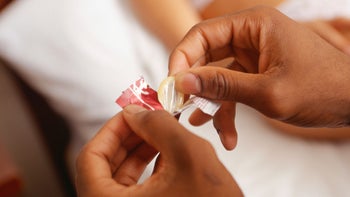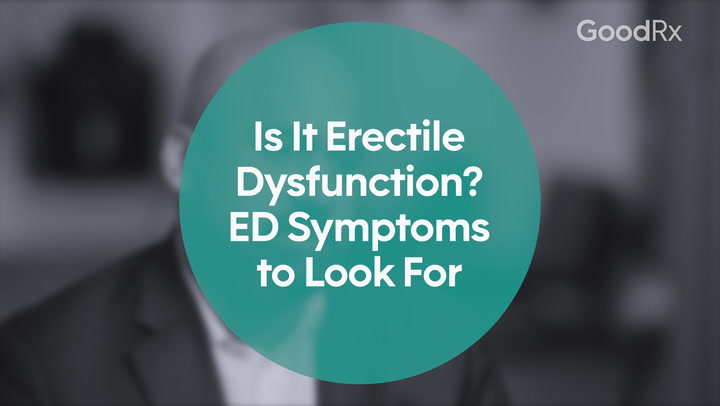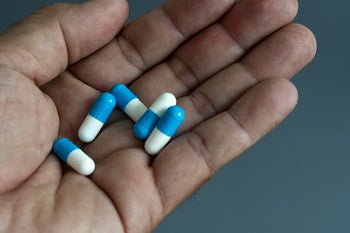
What to Do If You Notice Your Condom Broke During Sex
Key takeaways:
Condoms are a great way to protect yourself during anal, oral, and vaginal sex.
Even when you use them correctly, condoms can break.
If a condom breaks, don’t panic. There are medications you can take to prevent pregnancy and protect yourself from getting human immunodeficiency virus (HIV).
Access savings on related medications
Table of contents

Condoms are thin, tube-shaped pieces of latex or plastic that protect your body during sex. When used correctly, condoms are almost 100% effective at preventing pregnancy.
But even though condoms are an easy and inexpensive way to protect yourself, they’re not perfect. Sometimes condoms break — even when you do everything right.
So what should you do if a condom breaks? And how can you tell if it broke in the first place?
How to know if a condom broke
Let’s be honest: It can sometimes be hard to tell when a condom breaks, especially if it happens during sex. If you’re the person wearing the condom, you might be more likely to feel it break.
Here are some things you might see if it breaks:
A hole or tear in the condom
Semen (cum) leaking out of the condom
Parts of the condom missing
Read more like this
Explore these related articles, suggested for readers like you.
How often do condoms break?
Studies have found that condoms break between 1% and 12% of the time. And one study in particular found that condoms slip off at a similar rate. Of course, that’s a pretty wide range, but that’s all the more reason to make sure you know how to use condoms correctly.
Can condoms fail without breaking?
Yes. For one thing, it’s possible for there to be a microtear in the condom. In this case, you probably won’t be able to see it and therefore won’t know that it’s broken. Also, semen can leak out of a condom if someone leaves it on for too long.
It’s important to remember that condoms are not 100% effective at preventing pregnancy or sexually transmitted infections (STIs) and sexually transmitted diseases (STDs) even when used properly.
Broken condom: What to do next
If the condom broke, don’t panic. If you’re still in the middle of having sex, the first thing to do is replace the condom with a new, unbroken one.
After that, how much you should worry depends on whether you’re concerned about pregnancy and how likely it is that you or your partner have human immunodeficiency virus (HIV) or other STDs.
What to do if you’re worried about getting pregnant from a broken condom
If you’re worried about getting pregnant, you have three emergency contraception options.
Levonorgestrel pill
A levonorgestrel pill, also known as a morning-after pill, can keep you from getting pregnant after a condom breaks. The most well-known brand is called Plan B, but there are many different brands.
This pill is available without a prescription, which means you can walk into a drugstore or supermarket and buy it without having to see a provider first. This is true even if you’re under age 18 and/or do not have an ID card.
Keep in mind: This pill needs to be taken within 3 days after unprotected sex. And it works best if you take it as soon as possible. It might not work as well if you are considered overweight or obese (meaning your BMI is over 25).
Ella pill
Ella (ulipristal) is another morning-after pill. It is more effective than levonorgestrel, and you can take it up to 5 days after having unprotected sex.
You can only get Ella with a prescription. This means you will need to see a healthcare provider before you can take it. Ella might not work as well in people who have been told they are obese (BMI over 30).
Copper IUD
A copper IUD (intrauterine device) is a small device that is placed in your uterus to prevent pregnancy. It’s almost 100% effective at preventing pregnancy — as long as it’s put in place within the first 5 days after you have unprotected sex. You will have to see a doctor to have an IUD inserted.
More on emergency contraception
Not sure which emergency contraception option is right for you? Planned Parenthood has a quick online quiz that can help you decide.
It’s also important to know that emergency contraceptives can prevent pregnancy, but they do not protect you against STDs or STIs.
And, finally, emergency contraception is not the same as abortion. Emergency contraception prevents pregnancy before it happens. Abortion stops a pregnancy that is already in progress.
How soon should you take a pregnancy test after a condom breaks?
According to Planned Parenthood, a safe bet is to take a pregnancy test 3 weeks after having unprotected sex or as soon as you realize that your regular period is late.
What to do if you’re worried about HIV
If you think you’ve been exposed to HIV, you can take post-exposure prophylaxis (PEP). PEP is an emergency medication that you take after sex to protect you from getting HIV.
Keep in mind that you have to start PEP within 3 days after having unprotected sex for it to work. It’s also only available with a prescription. This means you’ll need to talk to a provider or go to urgent care before you can take this medication.
How soon can you get tested for STDs after a condom breaks?
Most STDs will show up on tests 2 to 3 weeks after you’re exposed. With some types of HIV tests, it can take up to 3 months for detection.
Remember that you can have an STD without having any symptoms. So testing is the only way to be sure you don’t have one.
Condoms, even unbroken ones, don't do a good job at protecting you from STDs like human papillomavirus (HPV), herpes, and syphilis. If you’re having oral, anal, or vaginal sex, you should consider getting tested regularly — even if you’ve never had a condom break.
How can you protect yourself from broken condoms in the future?
Condoms are great at preventing pregnancy and many STDs. But they don’t work all of the time. That’s why it’s a good idea to use more than one approach to safer sex.
Here are some ideas to consider:
Double up on birth control. If you do not want to get pregnant, consider using condoms combined with another type of contraception, like birth control pills or an IUD.
Be ready for an emergency. Get a pack of morning-after pills ahead of time to have on hand in case a condom breaks.
Protect yourself against HIV. If you’re concerned about HIV, consider taking pre-exposure prophylaxis (PrEP). It is a medication that can prevent the spread of HIV. It protects people who don’t have HIV but are at risk of getting it — including men, women, and nonbinary people.
Is it OK to wear two condoms?
No, you should not use two condoms at the same time. That includes not using an internal condom and an external condom at the same time. Using more than one condom can actually increase friction and make condoms more likely to break.
Why do condoms break?
Condoms usually break because they’re not used correctly, rather than because of a problem with the condom itself. How your condom fits — and whether or not you’re using it correctly — matters more than the brand.
If you use condoms, here are some tips that can make them less likely to break:
Don’t carry condoms in your wallet or pocket.
Don’t store condoms in your car.
Don’t open the condom package with scissors or your teeth.
Don’t use oil-based lotions or lubricants.
Don’t use expired condoms.
Make sure to use a condom that fits correctly.
Learn how to put on and take off a condom correctly.
If you have sex for longer than 30 minutes, change to a new condom.
Use a new condom every time you have sex.
One more tip: Latex condoms break less often than plastic condoms.
The bottom line
Condoms are a simple and cheap — or even free — way to protect yourself from an unwanted pregnancy and many STDs. But they don’t work 100% of the time.
If you’re sexually active, think about adding a second type of contraception. And if you do have a condom break, don’t panic. Remember, even after a condom breaks, there are steps you can take to lower your chances of having an unwanted pregnancy or getting HIV.
Why trust our experts?



References
Centers for Disease Control and Prevention. (2021). Condoms.
Centers for Disease Control and Prevention. (2021). Condom fact sheet in brief.
Centers for Disease Control and Prevention. (2021). PEP.
Centers for Disease Control and Prevention. (2022). Condom effectiveness.
Centers for Disease Control and Prevention. (2022). Types of HIV tests.
Hey, It’s Free! (2023). Free condoms by mail or in-person.
HIV.gov. (2023). Pre-exposure prophylaxis. U.S. Department of Health and Human Services.
National Health Service. (2020). Condoms.
National Health Service. (2022). Condom tips.
Planned Parenthood. (n.d.). Condom.
Planned Parenthood. (n.d.). Emergency contraception.
Planned Parenthood. (n.d.). How do I get condoms?
Planned Parenthood. (n.d.). Is it possible for sperm to leak through a condom?
Planned Parenthood. (n.d.). Pregnancy tests.
Planned Parenthood. (n.d.). STD testing procedure.
Planned Parenthood. (n.d.). What’s the ella morning-after pill?
Planned Parenthood. (n.d.). Which kind of emergency contraception should I use?
Steiner, M., et al. (1993). Can condom users likely to experience condom failure be identified? Family Planning Perspectives.
U.S. Food and Drug Administration. (2022). Plan B one-step (1.5 mg levonorgestrel) information.














